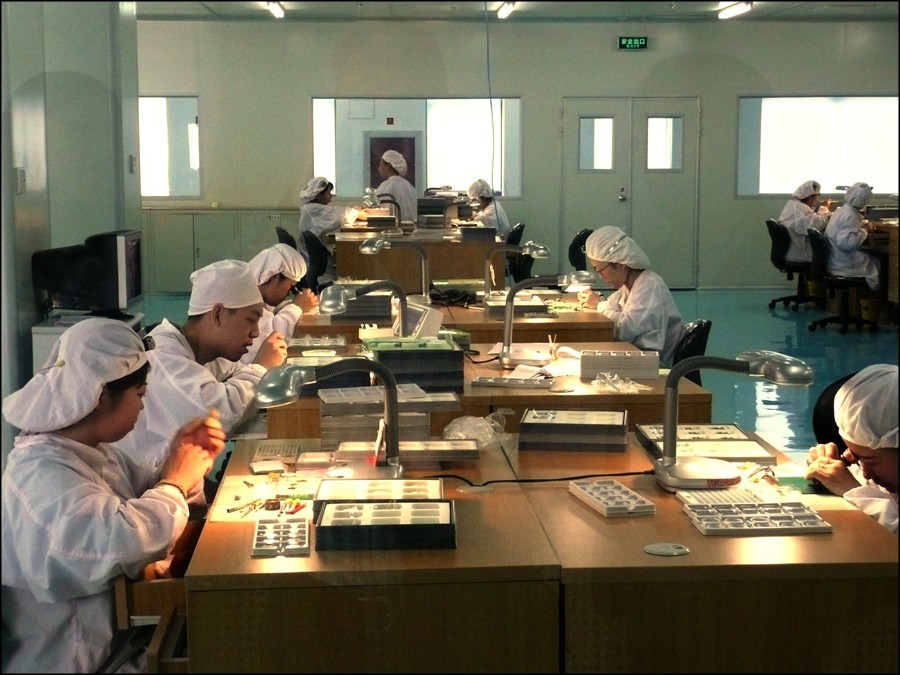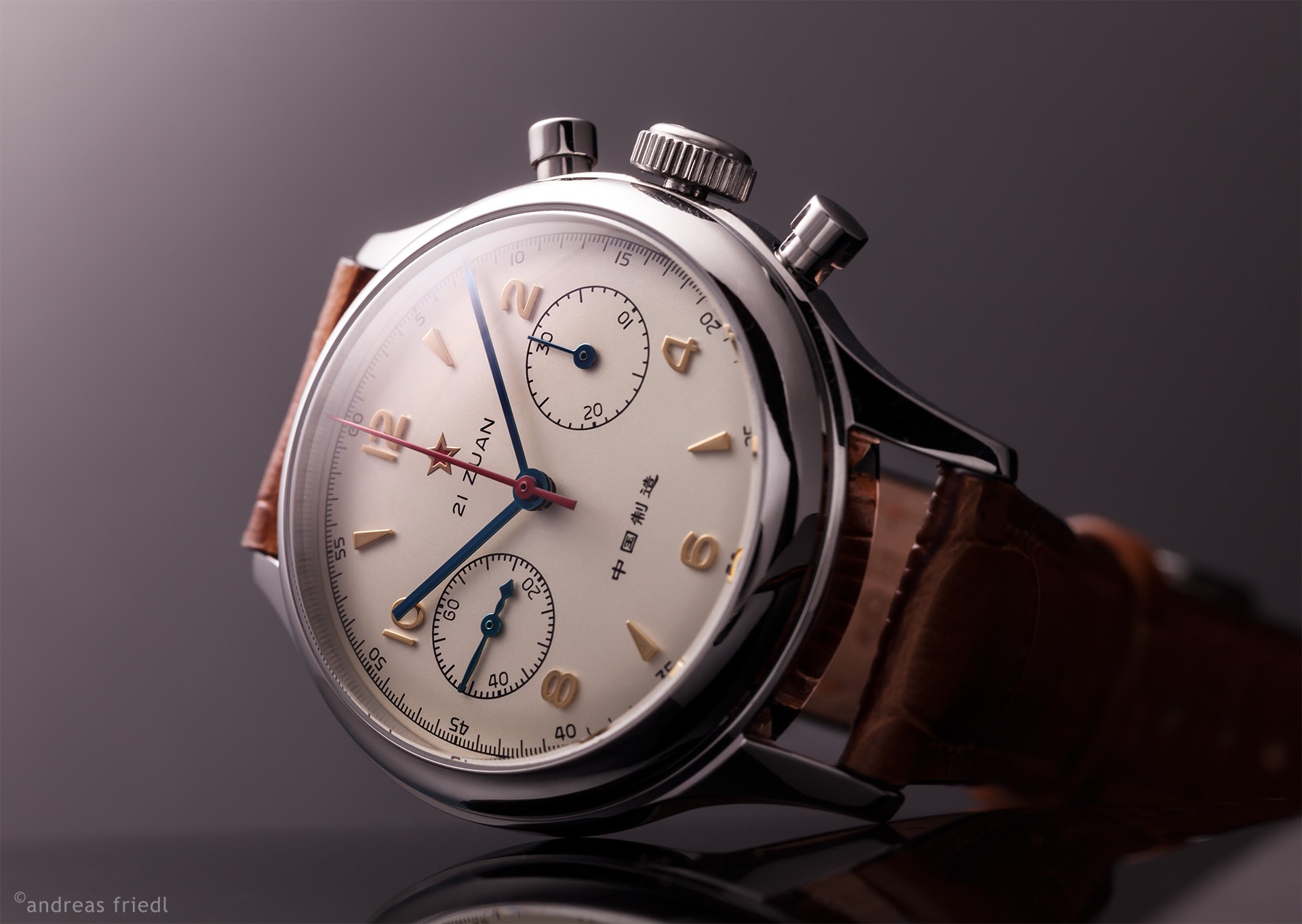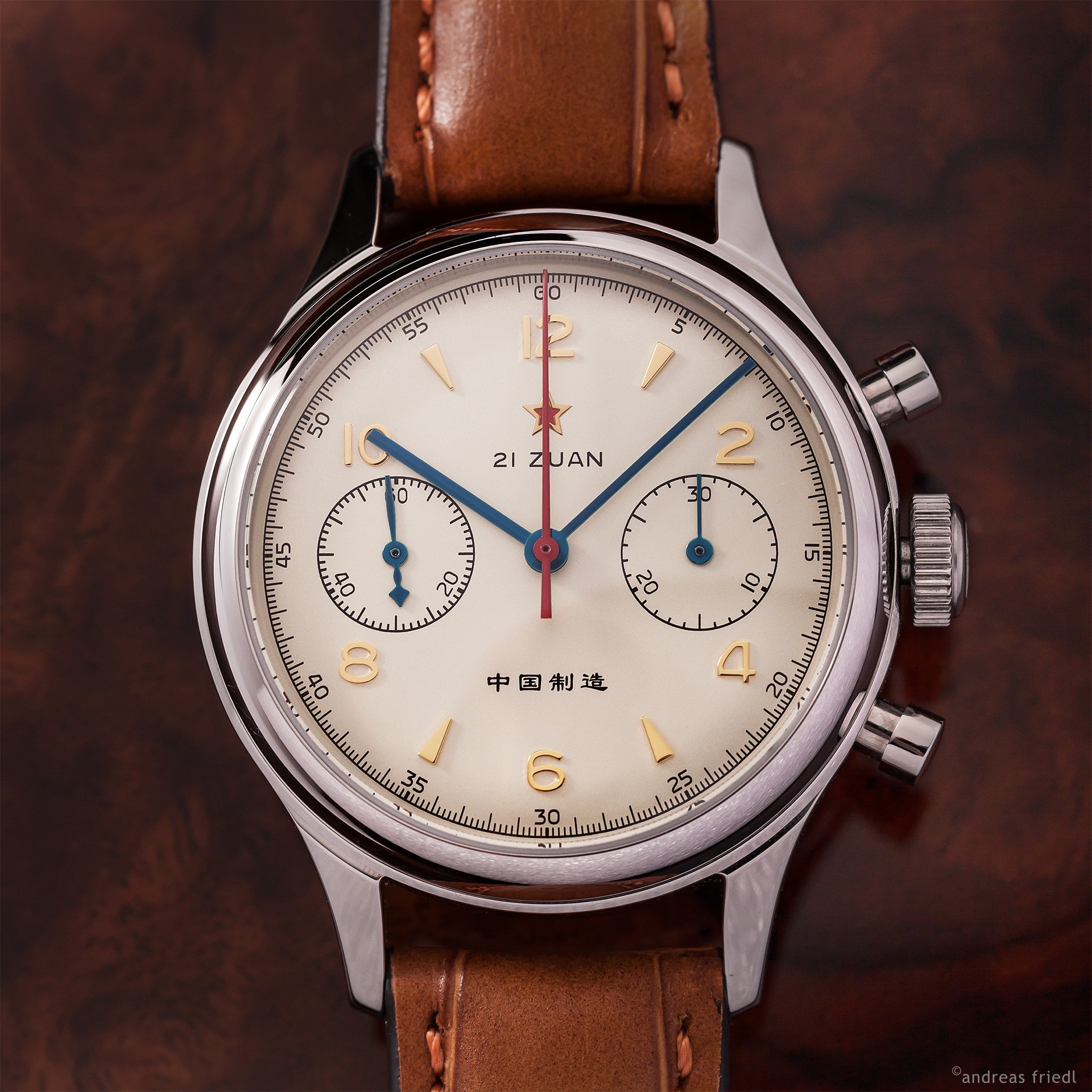Today we are gonna take a look at Seagull ST19 chronograph movement. I recently published a review of Wancher Strom Jet which features the ST19 and I really wanted to write an article about this movement.
So the story of this movement starts with the famous Seagull 1963 wristwatch that was first which received the ST19 movement. So the original story goes that in 1960s Switzerland there were three competing chronograph movement manufacturers: Lemania, Valjoux and Venus. Venus made the popular Calibre 175 column (or pillar) wheel chronograph movement that was used in several watches in the 1940s and 50s.
Competition in this space was fierce and Venus needed money to develop newer movements so they first tried to sell their existing Cal.175 machinery and designs to the Soviet Union. The Soviets, however, already had the Strela chronograph movement (a copy of Venus’ Cal.150) which meant they weren’t interested. But the Chinese were.
In the 1960s the Chinese were importing all their chronographs from Switzerland and the Soviet Union. They wanted to remove this dependency so the Ministry of Light Industry kicked-off several projects to develop Chinese-made clocks and watches. 304 was the code given to the project that would develop, test, and source a Chinese-built chronograph wrist watch for air force personnel. (100-series projects were for the navy, 200 for the army, 300 for the air force.)
In 1961 Project 304 assigned the task of developing and producing this air force chronograph to the Tianjin Watch Factory. This was partly because Tianjin had already created a popular watch movement of their own but also because Tianjin (the city) is physically closer to Beijing than, say, Shanghai (and, therefore, the Shanghai Watch Factory).
Tianjin bought the Cal.175 machinery and designs from Venus and then upgraded the original 17-jewel movement to their own 19-jewel ST19 movement. They completed their second round of prototypes in 1963 and, for whatever reason, this is the year that gets added to the watch’s name when collectors outside of China refer to it. Inside of China this watch is named after the project code and is called the ‘304 Airforce chronograph’.
By 1965 these watches had met all the requirements and passed all the Ministry’s tests so an order was placed. In 1966 Tianjin delivered 1,400 of these watches to the air force.
Jump forward to 1990 and the Tianjin Watch Factory was promoted to a national level enterprise. This was followed soon after by the creation of the Tianjin Seagull Corporation in 1992.
(‘Sea-Gull’ was the brand name given to the export version of the ‘DongFeng’, ie ‘East Wind’, watch that Tianjin made in 1965 and started exporting in 1973. This ran on the 100% Chinese designed and manufactured Calibre ST5 movement and was the first watch ever to be exported from China. So it made sense to add the most internationally well-known brand to the name of the new company.)
In 2003 Seagull resurrected Project 304’s movements and, by 2005, had reissued the first batch of commemorative aviation watches.
So we are done with the history and now let’s take a look at the modern iteration of the Project 304 or what it’s called today, the ST19 movement from Sea-Gull. Since the 1963 watch reissue, the movement has been gaining some popularity and following in watch community. As it is basically a Venus 175 with some updates right now. Many people are arguing that the ST19 is just a ripoff of the Venus 175, but in my opinion, it is legit movement. Sea-Gull bought everything from the Venus company, the machines, blueprints etc. that was used to produce the Venus 175, so basically it is the Venus 175 just produced in China. Also, many people hear the words “Made in China” and think that it is poor quality, but you got to remember that China is one of the best modern watch case makers and in general manufacturers of watches. They really make good watches. I have seen many China made watches for 500-1000$ dollars that are far better than Swiss made watches in prices up to 2000$.
ST19 comes in many different variations:
- ST1901: 2 register, small seconds at 9, 30 min counter at 3
- ST1902: 3 register, small seconds at 9, 30 min counter at 3, 12 h register at 6 that mirrors the time-keeping hour hand
- ST1903: 3 register, small seconds at 9, 30 min counter at 3, 24 h register at 6 that is not affiliated with the chronograph function
- ST1905: 2 register, small seconds at 9, 30 min counter at 3, decentral power reserve at 4:30
- ST1906: 2 register, small seconds at 9, 30 min counter at 3, decentral power reserve at 6
- ST1907: 2 register, small seconds at 9, 30 min counter at 3, central power reserve indicator
- ST1908: 4 register, small seconds at 9, 30 min counter at 3, date at 12, real moon phase at
- ST1940: 2 register, small seconds at 9, 30 min counter at 3, automatic
The version we are taking a look at today is the ST1903. And it comes in the Wancher Storm Jet which I reviewed couple days ago. The movement is 20-jewel Seagull ST1903 hand winding column wheel, flyback chronograph movement. Power reserve approx. 42-hours. The finishing on the movement is actually pretty amazing for the price, even if it is done with machines. The blued screws actually aren’t blued, they are lacquered in blue, in my opinion, they should’ve left them just plain silver colour or even gold colour. I’m not a big fan of blued screws or hands, to me, it just looks cheap, even if it is done the right way. It just would look better without the blue screws.
I wore the Wancher Storm Jet for about 3 weeks straight and the movement was constantly working and beating away. So I tested it for how much it gains/ loses seconds a day. In the first days, it was about +15 seconds a day, which isn’t big of a deal to me. But after a couple of days, it was +11 to +12 seconds a day. So the precision of the movement is decent. I have seen many chronographs going around these numbers. In those 3 weeks, I was also playing with the chronograph function a lot. Pushing the pushers in and out. The chronograph function works great. Although sometimes when I pushed the upper pusher, the second’s hand looked like it wasn’t going smooth, the one gear was slipping or something because it was kind of lagging. But that issue disappeared after the first week. I guess the gears needed to worn in, to work properly. Pusher action felt very good and the winding was very pleasant and easy. The power reserve that I got was about 40 hours, I never got to experience the promised 42-hour power reserve. I tested it on every week’s Friday for the power reserve, and, usually, my timer stopped at around 39 to 40 hours.
Overall I liked the movement. It was everything I hoped for it to be at this price. I like the history of it and the whole story. I now respect China made wrist watches a little more after I looked in it. I also am planning to get the 1963 reissue watch soon for my collection and also to review. I also want to get one, because I want to know how this movement will perform after 2, 5, 10 and more years. From what I can read the watches bought in 2007 still are running great and have no problems, some even say that from 2008 they haven’t done any service to the movement and they are still running great. Any case it was interesting reading the history and finding out more about this movement. Thanks for Wancher watch company for lending me the Storm Jet watch to try out the ST19 movement.

















Thank you for a very interesting article, and a superb watch.
A real homage to the Sinn 103 chronograph, too…
LikeLiked by 1 person
Awesome article, cool and interesting history. Been tempted for a few years but still haven’t jumped on it. Really like the panda dialed versions of this but not sure if I should go for the original if I eventually do decide to buy one..
LikeLiked by 1 person
Interesting and informative review! You write that now you respect China. You want to say that the mechanism Wancher Storm Jet made in China? On their website, designed & assembled in Japan. It is interesting to know your opinion? Thank you
LikeLiked by 1 person
I don’t know if I understood your question right, but I will try to answer anyway. The SeaGull ST19 movement is made in China, but the Wancher watch itself is only designed and assembled in Japan, so that means they got their parts, probably from China and assembled the watches in Japan. That isn’t necessary a bad thing as China has gotten pretty good in watch manufacturing in the last years.
LikeLike
One of the most Beautiful modern chronographs on the market today ! With a unbelievable low price point. Great article!
LikeLike
Great article, interesting history but still under a magnifying glass, Seagull watches are just cheap chinese watches!
LikeLike
True, but if you buy the ones that are over 500$ you get a really great quality!
LikeLike
Thank you for a great review. I expect the quality control is not the same on SEAGULL movements as on ETA. It would be cool if there was a version ST190X with small seconds at 9, 30 min counter at 3 and date at 6. Then some less expensive homage wathes could be made of those 70’s watches containing the Valjoux 7734.
LikeLike
Very cool history, thanks!
LikeLike
dove comprare ricambi
LikeLike
Search the forum watchuseek or try google! I also could suggest writing to Sea-Gull themselves!
LikeLike
There are several watches that claim to be ST19-based. For example, there are some watches from Red Star that have a 2-digit date at 12 o’clock, seconds at 8 o’clock, and 30-minute dial at 4 o’clock. My question is how are these complications and moved around on an ST19 works?
The finish on the ST19 looks very good compared to a Russian 3133 movement. BTW, I get sticker shock when I look at a Swiss 7750!
LikeLike
Very nice and interesting review, thanks. I just bought a Seagull 1963 and must say I am delighted with it, with its lovely dial and functionality at an affordable price.
LikeLike
I was having notions of doing an ebay-parts frankenwatch around this movement. I have an old Navitimer with the Venus 178, and it’s the most glorious mechanical thing I’ve ever laid eyes on 😀 , so I’m very intrigued by these Seagull movements. Thanks for the in-depth look.
LikeLike
Hello, thank you for the informative article. Have you attempted to regulate this watch to better than the +11, +12 spd and what were the results?
thank you very much!
LikeLike
Thank you for your review, but I don’t understand the function of the sub-register at 6 O’clock. You describe it as “not affiliated with the chronograph function”. What does this mean? This is the 3 register 1903. I see that the 1902 has a 3rd register that mirrors the time of the watch. I have one of these watches. That register is essentially a 2nd mini dial mirroring the main dial, giving you a 2nd identical indication of the time. So if the main dial reads, for example, 7:20 the mini dial at 6 will also read 7:20. So it’s really useless and serves no other function than for aesthetics. It doesn’t even differentiate between am and pm or give any kind of a 24 hour indication. But what does this subdial do in your watch with the 1903 movement? It’s not part of the chronograph, but I also see that it’s not showing the same time as the main dial is showing in your photo. Is it indicating a 2nd time zone?
LikeLike
Oh I see now, the 6 O’clock register of the ST1903 is a 24 hour register indicating military time for the current time, instead of the 12 Hour register for the ST1902. Missed that. Well that’s actually useful.
LikeLike
Is the ST1903 a real flyback movement ?
LikeLike
In my small watch collection I do have three ST19xx chronographs, one ST1901 and two ST1908 (moon, date). I do like the overall design of the movement, columnwheel and all. My watches even have the rare gooseneck regulation feature.
Really impressive is the accuracy: without fiddling on the gooseneck adjuster I see -2s/24hr on both ST1908, even after a few years in storage and unregular useage.
These Seagull chronograph movements are most likely the ONLY affordable mechanical calibres out there these days. The Russians have their Poljot 3133 and 31679 (functions like ST1901 and ST1908). But they have raised prices significantly over the years. And my Poljot 31679 stopped switching dates, so I am no longer a fan of Putin’s parade..
What I have not found out yet: what is a Seagull ST2901? Some dealers offer this version without explaining its difference relative to the baseline ST1901?
My interest in wrist watches started around 1977, when I bought my first chrono, as a youngster. My phenomenal Citizen 8110A automatic flyback chrono with bilingual day-date has never been opened since then, and still clocks at +/-2 seconds per 24 on my test bench TODAY!
LikeLike